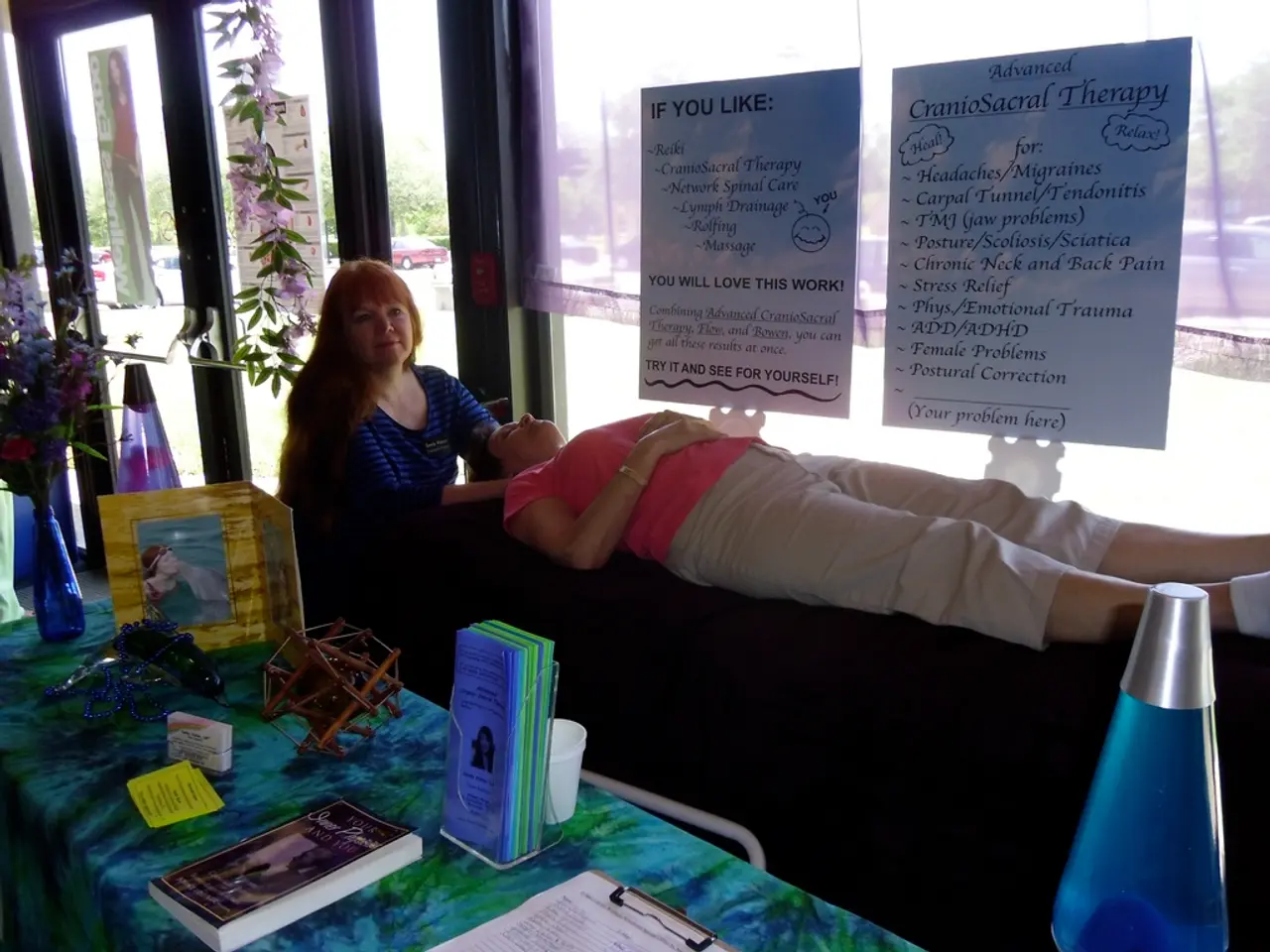The Cause of Your Back Pain: An Explanation
Back pain is a common ailment that affects a significant portion of the population, with approximately 75% of adults in Germany and 75-85% of Americans experiencing back pain at some point in their lives. This article aims to provide an overview of the causes, symptoms, and treatments of back pain.
Causes of Back Pain
Back pain can originate from various sources, including:
- Strained muscles, often resulting from incorrect lifting, sudden movements, or overactivity
- Disc injuries such as bulging, herniation, or rupture, which can compress nerves
- Spinal osteoarthritis and spinal stenosis, caused by damage and deterioration in the cartilage of joints in the lower back
- Osteoporosis, which can cause compression fractures in the vertebrae
- Rare conditions like cauda equina syndrome, fungal or bacterial infection of the spine, cancer or benign tumors in the spine, and other uncommon diseases
Certain risk factors increase the likelihood of developing back pain. These include work in a sedentary environment, lack of exercise, engaging in high-impact activity without stretching or warming up first, being older, having obesity, being a smoker, having been diagnosed with a specific condition like arthritis, and having a stressful job or suffering from depression and anxiety.
During pregnancy, back pain can be common and may be caused by shifting center of gravity, weight gain, and hormones that loosen the ligaments that stabilize the pelvis and lumbar spine.
Symptoms of Back Pain
Back pain symptoms can vary greatly, but common signs include a dull, aching sensation in the lower back, a stabbing or shooting pain that can radiate down the leg to the foot, an inability to stand up straight without pain, a decreased range of motion and reduced ability to flex the back, and symptoms that last for more than 3 months are considered chronic.
Treatments for Back Pain
Treatment for back pain depends on the underlying cause. A physical exam is usually all that's needed to diagnose back pain, but additional tests such as blood and urine tests, X-rays, CT scan or MRI scan, bone scan, electromyography (EMG), and other tests may be ordered if a serious condition is suspected.
Over-the-counter pain medications such as ibuprofen (Motrin, Advil) and naproxen (Aleve) are often used to treat back pain. For more severe pain, prescription medications like antidepressants like amitriptyline and muscle relaxants may be prescribed.
Topical products containing ibuprofen and lidocaine can be effective at reducing back pain, and opioids are stronger pain medications that can be prescribed for more severe pain, but should be used with caution due to the risk of addiction.
Alternative therapies like acupuncture, massage, chiropractic adjustments, cognitive behavioral therapy (CBT), and relaxation techniques may also provide relief for some individuals.
In many cases, gentle stretches and easy exercises can help ease back pain and prevent future problems. Yoga may be beneficial for back pain as certain yoga poses can help stretch and strengthen the muscles in the core and back, reducing pain and preventing future back problems.
When to Seek Medical Attention
While back pain is common and often resolves on its own, there are symptoms that can indicate a more serious medical problem. These include loss of bowel or bladder control, numbness, tingling, or weakness in one or both legs, back pain after trauma, intense, constant pain that gets worse at night, unexplained weight loss, pain associated with a throbbing sensation in the abdomen, fever, and if experiencing any of these symptoms, it is important to see a doctor.
Surgery is usually reserved for those with structural abnormalities that haven't responded to nonsurgical treatment with medication and therapy. In 90% of all cases, back pain gets better without surgery.
Preventing Back Pain
Preventing back pain involves maintaining good posture, carrying less weight, improving core strength, changing shoes, and stretching often. Home remedies such as heat and ice therapy, exercises, and essential oils can be used with traditional back pain treatments, but should be discussed with a doctor first.
In conclusion, back pain is a common issue that can affect anyone. Understanding the causes, symptoms, and treatments can help individuals manage their back pain effectively and prevent future problems. If you are experiencing back pain, it is essential to consult with a healthcare professional for proper diagnosis and treatment.






